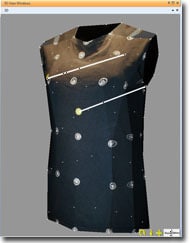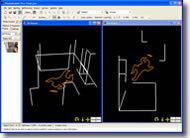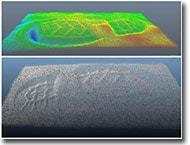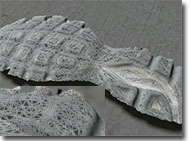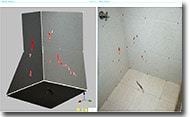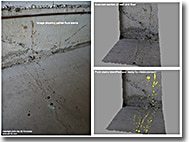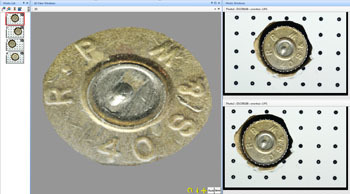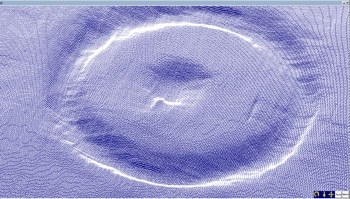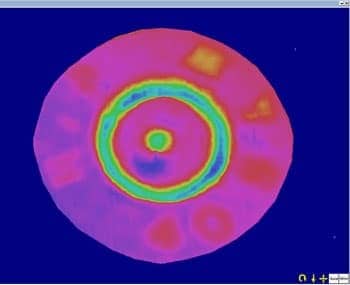Crime Scene Analysis with PhotoModeler
There are a number of uses for photogrammetry in crime scene measurement and reconstruction. Measurement in crime scenes is very important and a camera is often present so they go hand-in-hand. Some applications are:
- creating diagrams of crime scenes
- extracting measurements (such as height or placement) from surveillance video (also see surveillance video applications page)
- determining a bullet's 3D trajectory (so source point can be determined)
- 3D scanning a foot print in sand or soil, and the corresponding shoe
- 3D scanning of tire mark and the corresponding tire
- creating orthophotos (photos with no perspective distortion) of fluid spills or blood spatter
- 3d scans of body surface for bite marks
- scanning a bullet's striking surface to aid in firearm analysis
- determining positions of vehicles, cranes, building failures in photos taken just before an accident
Example Crime Scene Analysis
- indoor scene
- foot print
- blood spatter
- Bullet Rim
Determining bullet trajectories is an inherently 3D process. 3D photogrammetry provides a powerful capability to compute trajectories and determine source points (courtesy of DCM Technical Services).
The image shows a car door with rods placed in the bullet holes. The rods have RAD targets placed on them to help automate the process. Other RAD targets would be placed around the car so a known 3D coordinate system with the bullet vectors can be reconstructed. These rods are available for sale here.
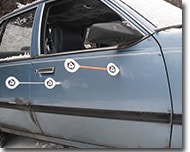
This novel technique takes a piece of clothing from a victim's body to help map out stains, and bullet trajectories. Traditionally this is done in 2D by laying the garment out on a table, but here it can be modeling in 3D using PhotoModeler and then demonstrated to the court using animation and other 3D techniques. Image courtesy of AI2-3D Forensics.
